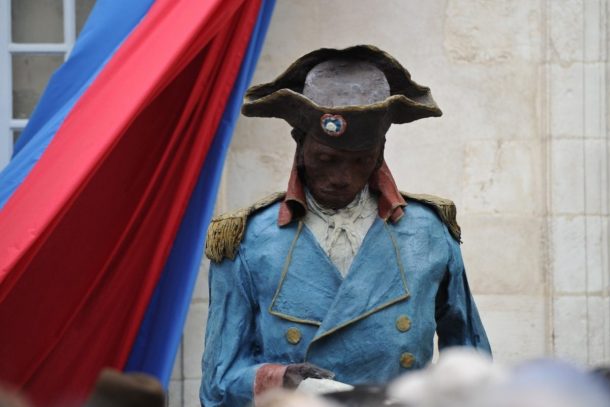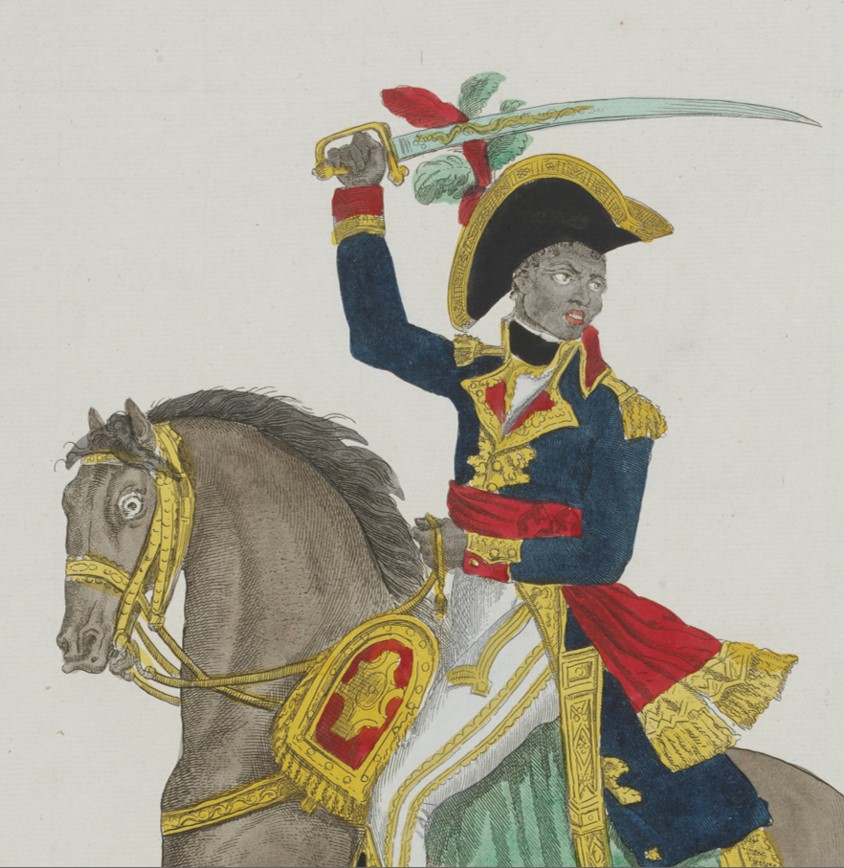The 20th of May marked 272 years since the revolutionary François-Dominique Toussaint Louverture (1743-1803), was born into bondage in Haiti, the French island colony then known as Saint-Domingue (Santo Domingo). I was interested to read that in 2015 this date saw the unveiling of a new statue in memory of Toussaint Louverture, in the courtyard of the Museum of the New World of La Rochelle, France.
This former slave and revolutionary led the 1791 slave uprising in the French colony of Saint Domingue (now Haiti) – which successfully contributed to the abolition of slavery on the island. This overseas rebellion played an important role in the French abolition of slavery three years later and also led to the creation of the independent republic of Haiti in 1804.
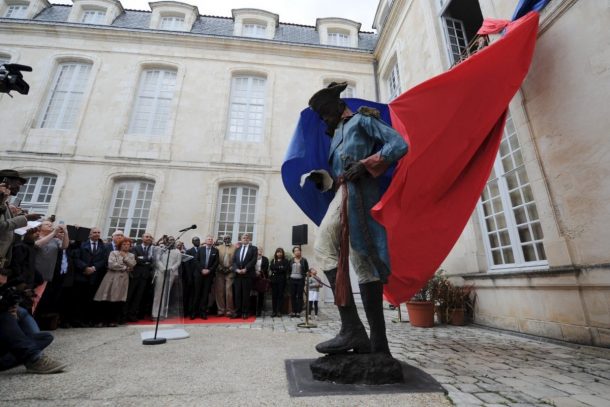
This towering bronze statue (2.8 metres high!), was created as a tribute by the famous Senegalese sculptor Ousmane Sow (1935- ). It shows Louverture wearing the costume of a governor of the French Republic of Santo Domingo, which became Haiti at its independence in 1804.
La Rochelle is a former slave port and the statue symbolically stands in the courtyard of the Museum of the New World, formerly the Hotel Fleuriau, named after the naturalist Louis-Benjamin Fleuriau whose family had made a fortune in the slave trade. Jean-François Fountaine, Mayor of La Rochelle, described this positioning of the statue as:
“The slave standing in the house of the masters is not revenge but reconciliation of the city with its history.”
A depiction of Toussaint will also be on display in the Europe Galleries, although admittedly on a rather smaller scale (the paper is just under 40cm).
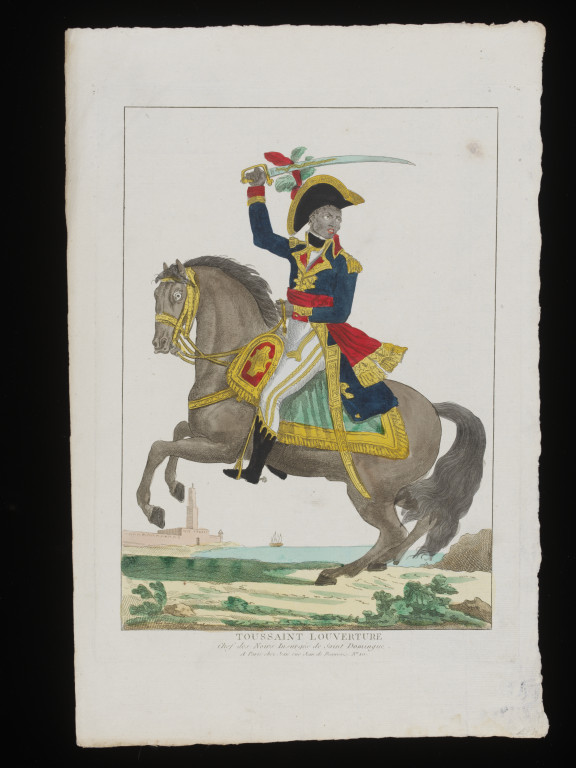
This print came to the Museum in 1883, as part of a collection of 33 prints described in the acquisition book as consisting of ‘Much Regal, Military and Other Costume’ and including prints of Louis XVI and Napoleon.
It is a hand-coloured print, published in Paris in 1802. It depicts Louverture as a high ranking military leader, holding a powerful pose on a rearing horse, with his sword held aloft. He wears full military dress and is set against a view of a port with a building in the background. Here, Toussaint Louverture is presented as embodying the egalitarian ideals of the French Revolution.
This celebratory and powerful depiction of Louverture (who was sometimes nicknamed The Black Napoleon) holds no suggestion of what was to become of his relationship with Napoleon and France, and ultimately the end of his life just one year later.
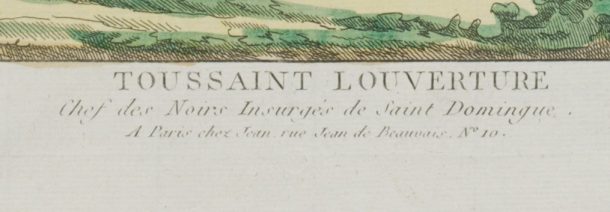
As the leader of the independence movement, Louverture at times tactically switched his forces’ alliances between the French and the Spanish. Despite this, he considered himself to ultimately be French.
When Napoleon gained power in France in 1799, he declared that the colonies would be subject to special laws. There was suspicion in the colonies that this would mean the re-introduction of slavery but Napoleon began by confirming Toussaint’s position and promising to maintain the abolition. Accompanying this recognition of position, Napoleon forbade Toussaint to invade Spanish Santo Domingo. This invasion would help put Toussaint in a powerful defensive position and so in January 1801, Toussaint and Hyacinthe Moïse disregarded Napoleon’s instructions, successfully invaded the Spanish territory and brought it under French law.
In March 1801, Louverture appointed a constitutional assembly to draft a constitution for Saint-Domingue. However, its content was considered too extreme and further angered Napoleon. Later that year, Napoleon dispatched French troops to reclaim the island. Despite initially negotiating an amnesty, Louverture was later seized and imprisoned at Fort de Joux in the Jura Mountains, France. Here, he died of pneumonia in 1803.
Ousmane Sow’s statue shows Louverture reading the constitution of Santo Domingo, a document that ultimately led to his arrest and imprisonment. In this moment of concentrated reading, the pose betrays some unexpected, emotive nuances, encouraging viewers to reflect on Louverture’s possible mixed hopes and expectations for this document.
